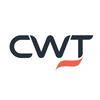3 ways to optimize your continuous hotel sourcing strategy
By Pauline Robin, Senior Director, RoomIt Solutions, RoomIt by CWT
The hotel sector has faced stormy weather the last couple of years. CWT data shows that whilst hotel bookings throughout 2021 were up from the previous year, Delta & Omicron curtailed 2021 bookings by roughly 50%. Although Russia’s invasion of Ukraine is causing shockwaves around the world there’s light on the horizon. Recent CWT data showed that there is pent-up demand for business travel in regions where testing and quarantine requirements have been relaxed.
The changed hotel landscape, combined with unclear volume predictions hasn’t made the negotiation process any easier for travel managers either. Buyers are left with a lack of insights on which to hinge predictions for the year ahead.
RoomIt by CWT manages hotel programs for some of the world’s leading global businesses, and noticed that where historically, lengthy and complex hotel negotiation processes taking place every year was the norm, travel buyers are now looking for a more flexible way to manage their programs and costs; whilst demand, volumes and budgets remain fluid. Hotel programs tend now to be smaller, strategically negotiated, closely managed, and adjusted throughout the year.
Travel buyers are achieving great efficiencies concentrating their hotel program portfolio with fewer more strategically negotiated - hotels , augmented with their travel management company’s negotiated properties.
Continuous control of hotel programs is expected to become the new norm as hotel experts have developed new ways of auditing supplier contracts. RoomIt is continuously reviewing corporate negotiated rates availability and competitiveness at the point of purchase allowing us to measure missed savings and identify the strongest partnerships for our clients.
Continuous tracking of the hotel program performance, combined with a progressively clearer visibility of future travel, enables travel managers to revise and update their hotel portfolio throughout the year to achieve savings and programme stickiness.
Here are three tips to optimize your continuous hotel sourcing strategy in 2022 and beyond:
Focus on savings
Well negotiated corporate rates or chain wide deals may look good on paper, but only drive optimized savings if managed correctly. There is a difference between negotiated savings and booked savings, and this is why continuously reviewing competitiveness and availability at the time of booking is important:
- A well negotiated rate that is recurrently not available at the time of booking will lead travelers to book higher rates at uncompetitive properties;
- Public rates can fluctuate throughout the year, sometimes reaching low levels that travelers focusing on their negotiated rates will not take advantage of.
We recommend our clients use their static negotiated rates as a cap when public rates are high; and leverage their TMC’s dynamic rates when public rates are lower. TMC’s extensive negotiated content will also offer alternative choices when availability is missing at preferred properties.
Define your end-to-end strategy for targeted results
Ensure your stakeholders are crystal clear on your company’s priorities with regards to savings, traveler wellbeing and sustainability. Travel programs, policy, display settings and rebooking rules must constantly align with your company’s expectations and priorities.
Strengthen your partnerships
Avoid diluting your volume with too many preferred properties or chain-wide deals at any given location. Instead, identify your most important partners and channel your volume toward those. In return, preferred hotels will give you the best rates, while ensuring competitiveness and availability at time of booking. Last but not least, choose suppliers that drive savings, offer the right coverage at key destinations and support your company and travelers’ goals.
